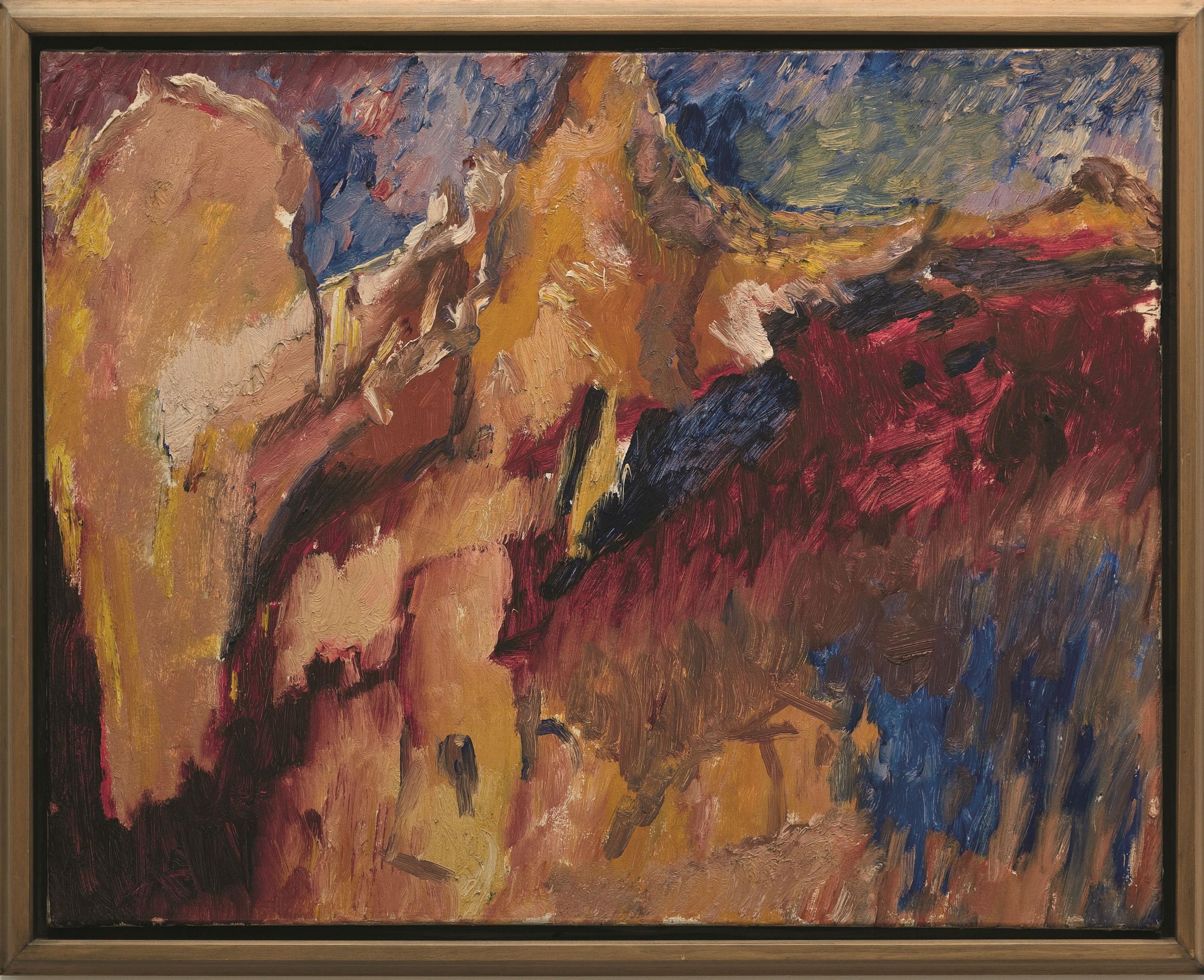Bomberg, Ben Uri Gallery, London, review: This work feels rough-hewn, hard-won, achieved against all odds
A compact exhibition shows 40 of the artist's best paintings and drawings, revealing the violence of his work

Bomberg. The name sounds hard-hitting, pugilistic, cussed, a bi-syllabic biff. A near perfect act of self-characterisation then. He had a lot to fight back against.
A scion of Polish-Jewish immigrants from Birmingham. Growing up in the East End of London at the beginning of the 20th century. A struggle, lifelong, unrelenting, to establish his own legitimacy, as painter and human being. The work feels, looks, rough hewn, hard won, achieved against all odds.
As far as professional recognition went, you could call his life a resounding failure. David Bomberg's work as an official war artist was rejected – in both wars. His paintings didn't sell. And now, surprise, surprise, we look on him as something of a marvel for doing what he did – and perhaps, in part at least, because he was working against the grain. He was rejecting the orthodoxies of the day just as much as he himself was being spurned – tit for tat, you might say.
The early works in this pleasingly compact show of 40 of his best – paintings and drawings – reveal him as a proto-modernist. The energy of the human – always ordinary folk, bargees and such like – is severely contained by geometry, rigid patterning. His bargee bends forward like a buckled fork. Humans interlock in a kind of crazed, jazzy, metal-puzzle confusion. He lays down colour blockishly, thickly.
There is such violence here. A contained violence. Nothing is tentative, pernickety, fussy about Bomberg. There is no refinement, no cap-doffing, no easy lyricism. When he paints landscapes, he runs from topographical detail as if barefoot from a forest fire. The high viewpoint pleases him, the view down into.
Could that be the abyss of himself that he is staring into? Buildings begin to dissolve into abstract shapes. When he makes portraits, he obliterates the human features. Self disgust? Other disgust? It feels like painting inside a pressure cooker.
The colours he uses in some of these landscapes – a view of Cyprus, where mountain abuts sea; a gorge in Spain, with a bridge high-flung over – has a kind of Blakean combustibility. An apocalypse of colours. Rage, inner and outer. Thwarted ambition. Winning through – for posterity's sake.
Until 16 September (benuri.org.uk)
Join our commenting forum
Join thought-provoking conversations, follow other Independent readers and see their replies
Comments
Bookmark popover
Removed from bookmarks